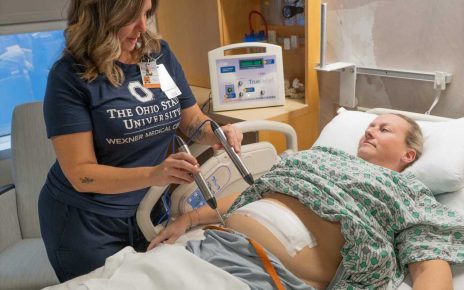
For critical care nurses, identifying declines in patient condition as soon as possible can help improve the quality of care delivered and reduce medical emergencies.
Now, Eydie Tipton, a doctoral student at the MU Sinclair School of Nursing and nurse researcher at Blessing Hospital in Illinois, is part of a team that implemented an early warning detection system—one that employs real-time alerts monitored by an experienced, critical care registered nurse who is trained to recognize changes indicating a worsening of condition. The team found this evidence-based practice can reduce medical emergencies and mortality rates before patients’ health declines.
The pilot project started at Blessing Hospital, where Tipton, Yvonne Goellner, Tammie Verzino and Laura Weigand work. The project included both an early warning detection system that details around-the-clock changes in patients’ vital signs and cardiac rhythm, as well as the creation of a new, full-time nursing position, known as a high-acuity response team nurse. This nurse used constantly updated data to monitor subtle changes in a patient’s condition and collaborated with the primary care nurses to make informed care decisions before a patient’s condition rapidly deteriorated.
“We never want to wait until it is a crisis situation, so if the high-acuity response team nurse notices subtle changes in a patient’s condition, including drops in blood pressure or rises in heartbeat, they can quickly talk with the primary care nurse and make informed decisions quickly and efficiently,” Tipton said. “This allows for early interventions to be implemented when patients are clinically deteriorating, which ultimately improves the quality of care.”
Tipton explained nurses may often be responsible for more than one patient at a time, so adding the new nurse position promotes professional collaboration and decreases the chances of declining patient condition to go unnoticed. She hopes more hospitals around the country can incorporate a similar model to improve the quality of care.
“When the right people are equipped with the right technology, we can help reduce mortality rates and improve patients’ quality of life,” Tipton said.
Source: Read Full Article



